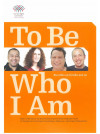Tran people strive to live lives of dignity in communities throughout New Zealand.
The youngest person to meet with the inquiry was an 11-year-old intermediate school student; the oldest was in her late seventies. We heard from trans people who are in business, who are farmers, academics, artists, health professionals, sex workers, economists, managers, trades-people, parents and grandparents. They referred to themselves in many ways: whakawāhine, fa’afafine and fafaleiti gave submissions alongside Male-to-female (MtF) and Female-to-Male (FtM) transsexual, cross-dressers, androgynous genderqueer people, and some intersex people. Others simply wanted to be known as a man or woman.
In recognition of that diversity, the inquiry has chosen to use the generic term ‘trans’. Trans people said what they held in common was the struggle to come to terms with who they are, to have others accept them and to be able to live fulfilled lives in the sex they know themselves to be.
Human rights are about dignity, equality and security for every person. This report documents for the first time the obstacles to dignity, equality and security for trans people in New Zealand. It shows how discrimination impacts on all aspects of their lives; how from a very young age it can threaten their personal safety, deny a secure family life, undermine health, opportunities to learn, to join a sports team, to get a job, to commit to a career. Equally, it records and acknowledges stories of achievement and of triumph over great adversity.
This report has tried to reflect the courage and generosity of trans people and their family members, colleagues and friends who shared their stories. The inquiry is indebted to trans community groups who welcomed us to their hui, fono and conferences. The inquiry also greatly appreciated the engagement with key government agencies and with health professionals who work with trans people.
The inquiry’s findings show clearly that being trans is not a lifestyle choice; it is simply one dimension of the rich diversity that is humanity.
Report Structure
-
The report begins with the profiles of ten trans people. Their stories tell how they have come to terms with who they are, their search for acceptance and how they live lives of dignity.
-
Through history trans people have been present in every society, a part of every culture. A short section sets out, in board terms, the historical, social and cultural context within which trans people struggle to find recognition as full citizens.
-
In Chapter 3 the focus moves to the experiences of tran children and young people asserting their gender identity from a very young age. There are moving accounts of the difficulties they and their families face in putting a name to, let alone dealing effectively with, their reality.
-
Chapter 4, on equality and freedom from discrimination, provides troubling evidence of how difficult even the ordinary things in life can be for an adult who is trans.
-
Chapters 5 and 6 focus on health and citizenship, two areas that severely impact on a trans person's wellbeing and sense of security. The health chapter identifies the disadvantage experienced by trans people in accessing health services which are vital to the well-being of trans people. The Citizenship chapter explains the importance of having official documents such as birth certificates, drivers' licenses and passports accurately state the sex they live as.
-
A small number of intersex people made submissions. These are summarised in Chapter 7. The specific issues of intersex people merit further attention.
-
Chapter 8 reviews the legal framework and identifies where amendment is required. Finally Chapter 9 details the inquiry's findings in relation to the terms of reference and explains the report's proposals and recommendations.
This report aims to accurately relate the experiences of trans people; to provide reliable and up-to-date information about the laws, policies and services that affect them; and to explore what works well, what does not and why that might be. The perspective of government agencies are integral to the information and analysis provided.

